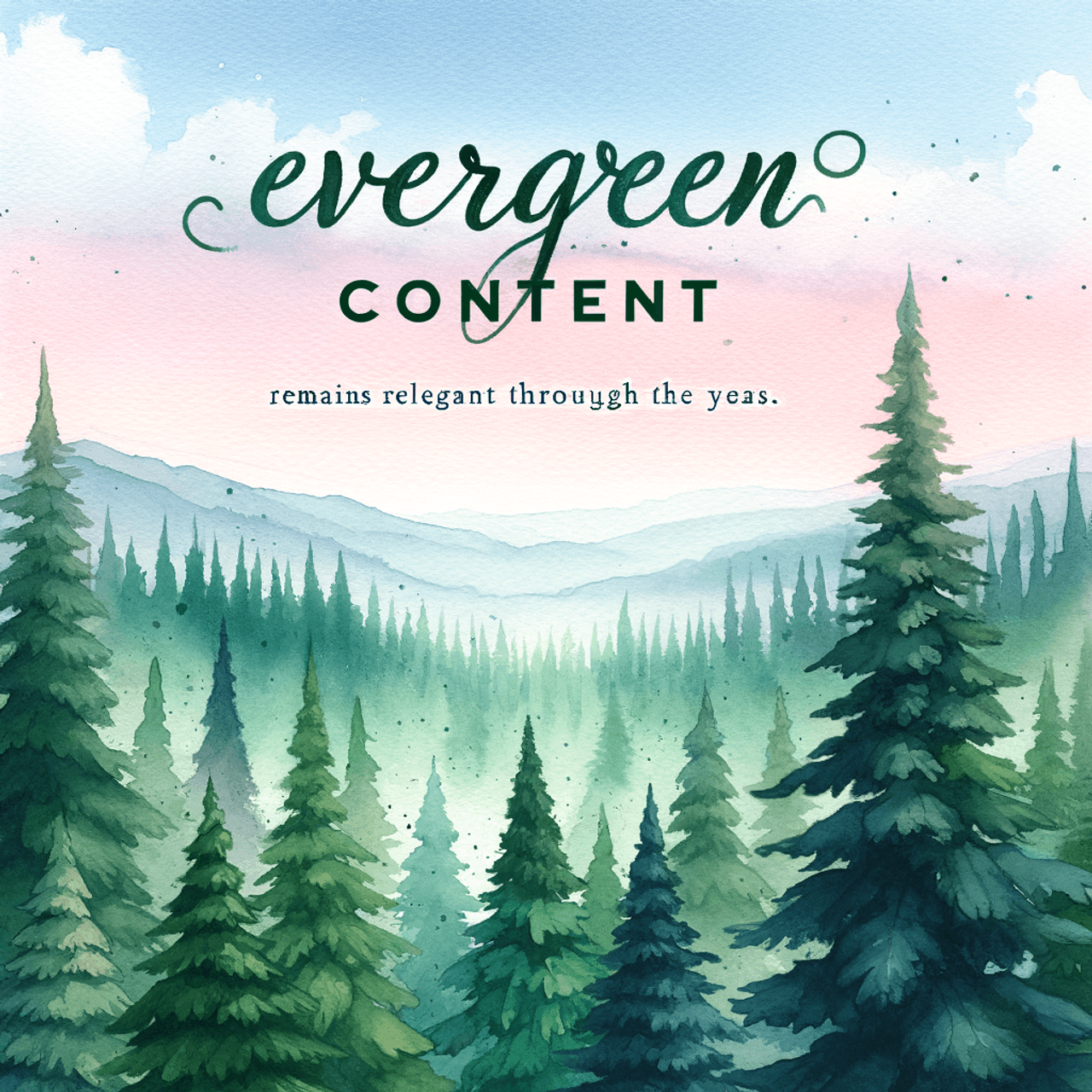by ContentERP | Oct 13, 2024 | Uncategorized
5 Common Content Management Challenges and How to Overcome Them
 Once upon a time, in a bustling city full of merchants, there was a wise shopkeeper named Maro. He sold everything from spices to textiles, but what made his shop stand out wasn’t just his range of products—it was his system of organization. While other shops were chaotic and cluttered, with items spilling off shelves and customers leaving frustrated, Maro’s shop was always neat, with every item in its rightful place. He thrived because he mastered the art of management.
Once upon a time, in a bustling city full of merchants, there was a wise shopkeeper named Maro. He sold everything from spices to textiles, but what made his shop stand out wasn’t just his range of products—it was his system of organization. While other shops were chaotic and cluttered, with items spilling off shelves and customers leaving frustrated, Maro’s shop was always neat, with every item in its rightful place. He thrived because he mastered the art of management.
In many ways, managing content in the digital age is a lot like Maro’s shop. With endless streams of data, articles, and media pouring in every day, it’s easy for things to get disorganized. And when they do, it doesn’t just affect your day-to-day operations—it impacts your audience’s experience and your ability to grow. The challenges of content management are real, but like Maro, there are ways to overcome them with the right strategies and tools.
Let’s explore five common content management challenges and how to solve them effectively.
1. The Overwhelming Flood of Content
“It’s like drinking from a firehose.”
The digital world never sleeps. Every minute, millions of new pieces of content are created and shared across platforms. From blog posts and social media updates to videos and product descriptions, the sheer volume of content can leave teams feeling like they’re drowning. How do you keep track of everything? How do you ensure consistency when it feels like there’s too much to handle?
The Solution: Create a Content Calendar and Centralize Your Content
The first step to taming the content flood is organization. Much like a captain mapping out their course before setting sail, creating a content calendar allows you to see the big picture and plan ahead. This simple tool can help your team visualize what needs to be done and when. It ensures that content production is steady, rather than reactive.
Additionally, centralizing your content in a single content management system (CMS) can streamline the process. With a platform like ContentERP, you can track every piece of content from draft to publication, ensuring nothing gets lost in the sea of files. Instead of diving headfirst into chaos, you’ll navigate with purpose, steering your content strategy with confidence.
2. Inconsistent Content Across Platforms
“It’s like trying to herd cats.”
One of the biggest challenges businesses face is maintaining consistency across different platforms. A blog post might have one tone, while a social media update strikes a completely different chord. When content lacks cohesion, it can confuse your audience and dilute your brand message.
The Solution: Develop a Unified Content Strategy
Consistency is key. Before creating any content, it’s crucial to define your brand’s voice, tone, and messaging. This is your compass, guiding every piece of content, no matter where it’s published.
Tools like ContentERP offer templates and style guides that help maintain consistency across all platforms. Whether it’s a tweet, blog post, or email newsletter, your brand’s personality will shine through in every piece of content. By unifying your content strategy, you’ll ensure that every message feels like it’s coming from the same place, even if it’s presented in different formats.
3. Poor Collaboration and Communication
“Too many cooks spoil the broth.”
When multiple team members are working on a content project, it’s easy for wires to get crossed. One person might not see another’s edits, while another might be unaware of deadlines. In the world of remote work, where teams are often spread across different time zones, poor collaboration can bring content production to a grinding halt.
The Solution: Use a Collaborative CMS Platform
Effective communication is the backbone of successful content management. Tools like ContentERP allow teams to collaborate seamlessly, even when working remotely. With real-time updates, comments, and notifications, everyone stays in the loop. The platform acts as a digital workspace where writers, editors, designers, and project managers can work together without stepping on each other’s toes.
Additionally, having a clear workflow in place ensures that every team member knows their role and deadlines. By keeping communication clear and tasks organized, you’ll be able to avoid the chaos that poor collaboration often brings.
4. Difficulty Maintaining Quality with Quantity
“You can’t make a silk purse out of a sow’s ear.”
As content demand grows, many businesses face a dilemma: How do you maintain the quality of your content when you’re under pressure to produce more? Rushed content often leads to poor research, shallow insights, and errors, which can damage your brand’s reputation.
The Solution: Automate Where You Can, But Keep Quality at the Core
While it’s tempting to churn out content to keep up with demand, quality should never be sacrificed. Instead, look for ways to automate repetitive tasks, like scheduling posts or optimizing SEO. By using tools like ContentERP, you can automate these processes while ensuring that your team’s time and creativity are spent on crafting high-quality, valuable content.
Additionally, it’s essential to have a quality control process in place. This might involve having an editor or subject matter expert review each piece before publication. In the end, it’s not about how much content you can produce—it’s about how well your content connects with your audience.
5. Struggling with SEO Optimization
“If a tree falls in a forest and no one is around to hear it, does it make a sound?”
Even the best content won’t make an impact if it’s buried on page five of search engine results. SEO (Search Engine Optimization) is one of the trickiest aspects of content management. It’s an ever-evolving field, and what worked last year might not work today.
The Solution: Use SEO Tools to Stay Ahead
Search engine algorithms are constantly changing, but with the right tools, you can stay ahead of the curve. ContentERP includes built-in SEO features, from keyword research to on-page optimization suggestions. These tools ensure that every piece of content is primed to rank well, driving traffic to your website.
SEO isn’t just about sprinkling in keywords. It’s about understanding search intent, creating valuable content, and structuring it in a way that search engines understand. With ContentERP’s guidance, you’ll be able to optimize your content for visibility while maintaining its quality.
Conclusion: Finding Balance in Content Management
 Like Maro, the wise shopkeeper, mastering content management isn’t about working harder—it’s about working smarter. By addressing the common challenges of content overload, inconsistency, collaboration, quality, and SEO, businesses can streamline their workflows and deliver valuable content to their audiences.
Like Maro, the wise shopkeeper, mastering content management isn’t about working harder—it’s about working smarter. By addressing the common challenges of content overload, inconsistency, collaboration, quality, and SEO, businesses can streamline their workflows and deliver valuable content to their audiences.
As the saying goIn content management, that first step is recognizing the challenges and finding the right tools to overcome them. Are you ready to take that step and transform your content strategy? Sign up for ContentERP today and discover how easy it is to overcome these challenges, delivering high-quality content that resonates, engages, and drives results. After all, in the digital age, managing content isn’t just about what you say—it’s about how effectively you say it.
by ContentERP | Oct 13, 2024 | Uncategorized
How to Create Evergreen Content that Continues to Drive Traffic
In the digital marketing world, content can be like a roaring bonfire—intense, bright, and attention-grabbing—but eventually, it flickers out. What if instead of chasing the fleeting sparks of viral posts, you could create content that endures? Enter evergreen content—the secret to crafting pieces that don’t just burn out after a day or two, but continue to drive traffic for months, even years, after they’re published. But how do you create such content? What makes it timeless, and why is it so essential for your content strategy?
 Think of evergreen content as the towering oak tree of your website—steady, dependable, and continuously growing over time. Unlike the fleeting trends of today, evergreen content remains relevant and valuable to your audience no matter how much time passes. In this article, we’ll delve into the art of crafting evergreen content that keeps driving traffic long after the initial publish date, and how tools like ContentERP can make the process seamless and efficient.
Think of evergreen content as the towering oak tree of your website—steady, dependable, and continuously growing over time. Unlike the fleeting trends of today, evergreen content remains relevant and valuable to your audience no matter how much time passes. In this article, we’ll delve into the art of crafting evergreen content that keeps driving traffic long after the initial publish date, and how tools like ContentERP can make the process seamless and efficient.
What is Evergreen Content?
Before diving into the “how,” it’s important to address the basics: what is evergreen content? Simply put, evergreen content refers to articles, blog posts, or other pieces of content that remain useful and relevant over an extended period. Think of it as the content equivalent of an all-weather jacket—whether it’s sunny, raining, or snowing, it continues to serve its purpose.Examples of evergreen content include how-to guides, FAQs, tutorials, product reviews, or posts covering timeless topics such as “how to budget” or “best ways to reduce stress.” These topics don’t depend on current events or trends; they hold their value indefinitely, making them perfect for consistent traffic generation.
 1. Focus on Evergreen Topics
1. Focus on Evergreen Topics
To create content that stands the test of time, the first and most crucial step is selecting the right evergreen topics. Trending topics, by their very nature, have a short shelf life. While a post about the latest iPhone model might attract a lot of attention today, it will quickly lose relevance once the next model is released.
Evergreen topics, on the other hand, address ongoing needs and interests of your audience. A post titled “How to Back Up Your iPhone Data” will remain useful through multiple product releases. So how do you find these timeless subjects? The answer lies in understanding your audience’s long-term needs and identifying topics that don’t hinge on fleeting trends.
Tools like ContentERP can help you explore a wealth of evergreen ideas, providing insights into what topics consistently perform well over time. With built-in keyword research and analytics, ContentERP helps you identify topics that align with your audience’s enduring interests, ensuring that your content continues to serve them months or even years down the road.
2. Craft Timeless, High-Quality Content
Once you’ve settled on a topic, the next step is to ensure that your content is of the highest quality. Evergreen content isn’t just about choosing the right subject; it’s about making sure your article is useful, well-researched, and structured to stand the test of time. Imagine your content as a lighthouse—solid, reliable, and guiding your audience to the answers they seek.
Writing high-quality content means going beyond surface-level information. Dive deep into your topic, providing comprehensive, in-depth analysis. Consider adding visual aids, infographics, and examples to make your content even more digestible and engaging. With ContentERP’s content planning and collaboration tools, you can easily streamline the creation of thorough, well-structured pieces with input from your team.
Moreover, timeless doesn’t mean static. To keep your content truly evergreen, update it periodically. Information might change over time, and regularly revisiting your articles to tweak outdated facts or refresh data ensures that they remain relevant.
3. Optimize for Search Engines
What good is evergreen content if no one can find it? SEO (Search Engine Optimization) is your evergreen content’s best friend. By optimizing your posts with relevant, high-performing keywords, you can ensure that your content continues to show up in search results, driving traffic long after publication.
Keyword research is crucial in this step. By understanding what your audience is searching for—both now and in the future—you can tailor your content to match their queries. ContentERP features a robust keyword research tool that helps you identify the best keywords for your evergreen topics. From SEO-friendly titles to meta descriptions and subheadings, ContentERP guides you through the process of optimizing your content for maximum search engine visibility.
Remember to strike a balance: sprinkle keywords naturally throughout your content, but avoid overloading it with jargon. Think of SEO as the engine powering your evergreen content strategy—it’s crucial to keep it running smoothly, but the quality of the content should remain the star of the show.
4. Promote and Repurpose Your Evergreen Content
Once you’ve crafted and optimized your evergreen content, the next step is promotion. Evergreen content isn’t just a “set it and forget it” asset. Share it regularly across your social media channels, feature it in your newsletters, and link to it within other blog posts. With every share, you extend its lifespan and reach.
Another effective strategy is to repurpose your evergreen content into different formats. Turn a blog post into an infographic, a tutorial video, or even a podcast episode. ContentERP’s collaboration tools allow you to easily coordinate between writers, designers, and marketers to repurpose content across multiple platforms. By doing so, you amplify the reach of your evergreen pieces and tap into new audiences.
Think of your evergreen content like a well that never runs dry. Each time you promote it or repurpose it, you’re drawing fresh value from the same content, keeping it alive and relevant.
Conclusion: The Garden of Evergreen Content
 Creating evergreen content is much like planting a garden. At first, you lay the seeds, nurturing them with care. But over time, those seeds grow into something beautiful—content that continues to flourish, driving traffic and delivering value for months and years to come. Evergreen content, when well-crafted, becomes a constant source of nourishment for your audience, a reliable resource that they return to again and again.
Creating evergreen content is much like planting a garden. At first, you lay the seeds, nurturing them with care. But over time, those seeds grow into something beautiful—content that continues to flourish, driving traffic and delivering value for months and years to come. Evergreen content, when well-crafted, becomes a constant source of nourishment for your audience, a reliable resource that they return to again and again.
In the fast-moving world of digital content, there’s something deeply satisfying about creating pieces that last. As the seasons change, as trends come and go, your evergreen content remains—steadfast, strong, and always there for your readers.
So, what’s stopping you from planting your evergreen seeds today? With ContentERP, you have all the tools at your disposal to plan, create, and optimize evergreen content that drives lasting traffic. Sign up for ContentERP now and start crafting content that doesn’t just make a splash—it makes a lasting impact. After all, the best gardens are those that continue to grow, season after season.
by ContentERP | Oct 13, 2024 | Uncategorized
Why ContentERP is the Best Solution for Modern Content Managers
It all started with a coffee stain. Jake, a seasoned content manager, was on his third cup of coffee when disaster struck. His laptop, sitting precariously on the edge of his cluttered desk, fell victim to a misjudged sip. The screen flickered, and the dreaded spinning wheel of death appeared. As Jake frantically scrambled to recover his work, he realized that his scattered, outdated content management tools had left him vulnerable—deadlines missed, drafts lost, and a client breathing down his neck.
Desperate for a solution that wouldn’t rely on luck (or perfect coffee aim), Jake discovered ContentERP, a content management system for websites that promised to turn his chaos into order. It wasn’t long before Jake was no longer cursing his laptop but marveling at how seamlessly he could manage his content from anywhere—without spilling a drop of coffee.

The Modern Content Manager’s Dilemma: Spinning Plates in a Digital World
If you’re a modern content manager, you’re no stranger to the juggling act. Between blogs, social media, SEO strategies, and multi-platform campaigns, content management feels like spinning plates on a tightrope. One misstep and everything crashes down. The traditional tools of the past—Excel sheets, endless email threads, and generic project management platforms—aren’t designed to handle the complex needs of today’s digital ecosystem.
That’s where ContentERP steps in. It’s the digital assistant you’ve always needed, working quietly in the background, organizing tasks, streamlining workflows, and making sure you hit those deadlines with ease. Think of it as the conductor of an orchestra—transforming the cacophony of tasks into a smooth, harmonious symphony.
But why is ContentERP the best content management system for the modern content manager? Let’s explore.
All-in-One Solution: A Swiss Army Knife for Content Managers
One of the biggest frustrations content managers face is the need to juggle multiple tools to get the job done. There’s one tool for scheduling, another for SEO, and yet another for analytics, and before you know it, you’re drowning in a sea of logins and interfaces. It’s like trying to assemble a jigsaw puzzle with pieces from different sets—it never quite fits together.
ContentERP changes the game by providing an all-in-one solution. It combines content management tools with features like SEO optimization, workflow automation, content scheduling, and analytics—all under one roof.
Why is this important? Time is money, as the saying goes, and switching between tools is like trying to catch butterflies in a windstorm. By streamlining all your tasks in one place, ContentERP reduces inefficiencies and keeps you focused on what matters—creating stellar content that engages your audience and boosts your website’s performance.
Streamlined Workflow: A Highway, Not a Maze

Imagine you’re driving across the country. Would you prefer a straight, well-paved highway, or a maze of confusing backroads filled with potholes? Managing content with disjointed tools is like navigating those backroads—confusing, slow, and frustrating.
ContentERP is the highway in this analogy. It offers a streamlined workflow that simplifies every aspect of content management. From ideation to publication, you can track your content’s progress, assign tasks to team members, set deadlines, and automatically move content through each stage of production.
It’s a system that treats content like royalty—ushering it through the process with efficiency and grace. No more forgotten drafts languishing in inboxes or lost files buried in a sea of email threads. With ContentERP, everything has its place, and nothing falls through the cracks.
SEO Integration: Your Secret Weapon
In today’s digital landscape, content isn’t just king—it’s also the court jester, the advisor, and the entire court. But even the best content is useless if no one can find it. That’s where SEO comes into play, and ContentERP comes equipped with advanced SEO integration tools that help your content rise through the ranks of Google’s search results.
No need to worry about manually researching keywords, optimizing meta descriptions, or tweaking readability scores. ContentERP’s content management system for websites automatically suggests improvements and ensures your content is SEO-ready from the get-go. It’s like having an SEO expert sitting by your side, whispering tips and tricks as you type.
For content managers, this feature is a godsend. SEO is often treated like a dark art, shrouded in mystery and algorithm changes. But with ContentERP, the guesswork is removed. It’s a tool that demystifies SEO, turning it from a headache into a competitive advantage.
Collaboration Made Simple: No More Lost in Translation
Let’s paint a picture: You’ve got a writer in New York, a graphic designer in Berlin, and an editor in Tokyo. Coordinating across time zones and platforms feels like herding cats—impossible and exhausting. That’s until ContentERP enters the scene.
One of the biggest strengths of ContentERP is its collaboration features. It acts like a digital hub, where all team members can access the same dashboard, review content drafts, leave feedback, and track progress. It’s a far cry from the chaotic days of endless back-and-forth emails and miscommunication.
In ContentERP, everyone knows where the project stands at any given moment. It’s like a well-rehearsed dance: each team member knows their next move, and the result is a perfectly executed routine. Whether your team is fully remote, hybrid, or spread across continents, ContentERP keeps everyone on the same page—literally and figuratively.
Flexibility: Manage Content from Anywhere
Remember Jake and his coffee-stained laptop? Before ContentERP, he was tethered to his office, constantly worried that if he left, everything would spiral out of control. But with ContentERP, he can manage his content from anywhere—whether he’s at the office, working from home, or sipping espresso at a café in Rome.
The system’s cloud-based platform allows you to access your content and workflows from any device. No more frantic dashes back to the office to approve a post or make a last-minute edit. It’s like carrying your entire content operation in your pocket. Flexibility is the new productivity, and ContentERP makes it possible.
Data-Driven Insights: Crystal Ball for Content Success
Gone are the days when you’d publish content and hope for the best. Today, data is the key to content success. But understanding that data and making sense of it can be a challenge. It’s like trying to find constellations in a starry sky without a guide.
ContentERP, however, acts like your stargazer’s map. It offers content management tools that track your content’s performance, giving you insights into engagement metrics, click-through rates, and audience behavior. These insights allow you to refine your content strategy, adjusting on the fly to meet your audience’s needs.
It’s not just about publishing content anymore—it’s about publishing the right content. With ContentERP, you can fine-tune your approach based on hard data, not guesswork. The result? Content that not only reaches your audience but resonates with them, driving more traffic and engagement to your website.
Why Choose ContentERP?
For modern content managers, the stakes are high. With an endless demand for fresh content, tighter deadlines, and the need to stay competitive in search rankings, the tools you use can make or break your strategy. ContentERP is the best content management system because it offers a comprehensive solution to every pain point you encounter—whether it’s workflow inefficiencies, SEO challenges, or team collaboration.
It’s the one-stop-shop that turns chaos into order, bringing together every feature a content manager needs to succeed in today’s fast-paced digital world. Like Jake with his newfound peace of mind (and his coffee safely in hand), ContentERP gives you the control and flexibility to manage content from anywhere without missing a beat.
Now, here’s a paradoxical question to leave you with: If content is king, but no one ever sees it, is it still royalty? Let ContentERP make sure your content always gets the throne it deserves. Sign up today, and never let a single piece of content fall through the cracks again.
by ContentERP | Oct 13, 2024 | Uncategorized
How ContentERP Helps You Manage Content from Anywhere
“The journey of a thousand miles begins with a single step.” – Lao Tzu
In today’s fast-paced, ever-evolving digital landscape, managing content efficiently can often feel like an endless journey. With multiple platforms, numerous deadlines, and varied audiences, the idea of keeping everything organized while maintaining creativity can be daunting. Fortunately, there’s an ally on this road: ContentERP. Like a well-oiled machine, ContentERP simplifies the complex journey of content management, allowing you to manage, optimize, and distribute your content from anywhere in the world.
This article will unpack how ContentERP—one of the best content management systems available today—empowers you to be in control of your content no matter where you are.

Content Management in a Digital World
We live in a time when brands are defined by the stories they tell, and the platforms through which they communicate those stories are more diverse than ever before. Social media, blogs, email newsletters, websites, podcasts—the list is long and growing. For businesses, it’s like spinning plates. The key is to keep every plate spinning without dropping a single one. But here’s the kicker: managing all these content streams manually is almost impossible, especially when remote work has become the norm.
This is where content management software like ContentERP steps in. More than just a tool, it’s the orchestrator that ensures every moving part of your content strategy is in sync, no matter where you—or your team—are working from.
A Digital Command Center in Your Pocket
Imagine this: you’re lounging on the beach, soaking in the sun, but you’ve just remembered that a crucial blog post needs to go live in an hour. Panic? No. With ContentERP, you can manage your entire content calendar from your smartphone. Need to make last-minute changes, approve a draft, or reschedule a post? It’s as easy as a few taps.
ContentERP operates like a 24/7 digital command center. Whether you’re halfway across the globe or simply working from your living room, it allows you to access, edit, and distribute your content from anywhere.
It’s not just about convenience, though. Managing content remotely also ensures that your content strategy is agile. In an industry where news breaks, trends shift, and algorithms change overnight, the ability to adapt your content strategy on the fly is critical. With ContentERP, the entire process is at your fingertips, regardless of time zones or geography.
Streamlining Workflow for Teams on the Move
Content creation is rarely a solo act. It involves writers, designers, editors, marketers, and SEO specialists, often collaborating across different locations. Keeping everyone in sync can feel like herding cats. That’s where ContentERP, one of the best content management systems out there, truly shines. It provides a centralized hub where teams can collaborate seamlessly.
Picture this: Your designer is in New York, your writer is in London, and your project manager is in Sydney. In a traditional setup, coordinating tasks between team members scattered across the globe would be a logistical nightmare. With ContentERP’s workflow management system, every team member can access the same dashboard, assign tasks, share drafts, and provide feedback in real time. It’s like having everyone in the same virtual room, even if they’re separated by oceans.
Beyond task management, ContentERP’s intuitive interface allows teams to keep track of content progress, from ideation to publication. You can create workflows where drafts automatically move to the next stage once they’re complete—no more juggling email chains or waiting for approval. ContentERP acts like a traffic cop, guiding each piece of content through the right channels, ensuring it arrives at its final destination without delay.
Remote Accessibility and Seamless Integration
Let’s face it: in today’s world, content isn’t just created in an office from nine to five. Creative ideas don’t wait for business hours, and neither should your content management system. Whether you’re working from home, the airport, or a coffee shop, ContentERP allows you to log in from any device, ensuring that you never miss a beat.
But that’s only part of the story. ContentERP is also designed to integrate with the tools you already use. It connects seamlessly with Google Drive, Dropbox, and a host of other platforms, making it a one-stop-shop for your content needs. Need to import a document from the cloud? Done. Want to export data into your analytics tool? Easy. The beauty of ContentERP is that it acts as the conductor in an orchestra of tools, ensuring each instrument works in harmony to produce the perfect content symphony.

Automated Workflows for Maximum Efficiency
If content management were a sport, manual processes would be the underdog constantly battling uphill. In contrast, automated workflows are the elite athletes—faster, more efficient, and always ahead of the curve. One of the core benefits of ContentERP is its ability to automate your content management workflows.
Let’s say you’re managing a complex content calendar for multiple clients. Without automation, you’d have to manually set deadlines, chase approvals, publish articles, and track analytics for each piece. It’s like trying to juggle fire, water, and air all at once. With ContentERP, you can set up automation rules that handle much of the heavy lifting for you.
For example, ContentERP can automatically schedule posts based on predefined keywords, push content to different platforms at optimal times, and even send you reminders when deadlines are approaching. It’s like having a personal assistant who never sleeps, ensuring that your content pipeline flows smoothly, no matter how many plates you’re spinning.
Data-Driven Content, Powered by AI
We’ve all heard the saying, “Content is king.” But in today’s SEO-driven world, data is the kingdom. ContentERP leverages advanced AI and machine learning to help you craft data-driven content strategies that can boost your visibility and engagement.
With ContentERP’s AI-powered insights, you can monitor how each piece of content performs across different platforms, giving you a real-time window into what’s working and what’s not. Whether it’s tracking keyword performance, monitoring audience engagement, or analyzing bounce rates, the system provides actionable insights that help you refine your content strategy. It’s like having a crystal ball that not only shows you the future but also tells you how to change it.
The Mobile Advantage: Manage On-the-Go
The real game-changer with ContentERP is its mobile accessibility. Gone are the days when managing content meant being chained to a desk. With ContentERP, the world is your workspace. Whether you’re commuting, traveling, or simply taking a break from the office, you have the power to manage your content from anywhere with an internet connection.
Imagine sitting in a park, sipping a cup of coffee, and approving a draft with a single tap. Or better yet, envision yourself on a flight, reviewing performance analytics or scheduling next month’s content—all from the comfort of your smartphone. ContentERP gives you the flexibility to work on the go, turning any location into a productive workspace.
Unlock the Freedom of Content Management from Anywhere
The power of ContentERP lies in its ability to make content management as fluid and flexible as your life demands. Whether you’re a solo entrepreneur managing a blog or a large enterprise with a global team, ContentERP is the tool that ensures you’re always in control, no matter where you are.
“The best way to predict the future is to create it.” – Peter Drucker.
With ContentERP, you’re not just managing content—you’re shaping the future of your brand’s narrative. Why settle for a content management system that keeps you tethered to a desk when you can have one that allows you to roam freely? The future of content management is here, and it’s mobile, global, and efficient. Sign up with ContentERP today and start creating from anywhere—because the world is your office, and your story is just beginning.
by ContentERP | Oct 13, 2024 | Uncategorized
How to Get the Most Out of Your ContentERP Subscription
“The best time to plant a tree was twenty years ago. The second best time is now.” – Chinese Proverb.
In today’s content-driven world, this ancient proverb is more relevant than ever, especially when it comes to maximizing the potential of digital tools like ContentERP. The platform provides the soil in which your content strategy can grow, but the sooner you optimize your subscription, the sooner you’ll enjoy a robust harvest of engagement, insights, and conversions.
In essence, subscribing to ContentERP is like hiring a full-fledged orchestra to perform a symphony, but if you don’t use all the instruments available, your performance might lack depth. The goal here is to transform every feature into a well-tuned instrument, playing in harmony with your brand’s goals. After all, a tool is only as powerful as the hands that wield it.

1. Understand the Full Scope of Your Subscription
Think of your ContentERP subscription like a toolbox; it’s no use if you don’t know what’s inside. Many subscribers make the mistake of barely scratching the surface, unaware of the valuable features at their disposal. ContentERP’s range of offerings is extensive, from content scheduling and workflow automation to analytics and seamless integration with other platforms. Before diving headfirst, take the time to explore every nook and cranny.
One way to do this is to regularly revisit the platform’s feature updates. Like a well-tended garden, ContentERP is always evolving, rolling out new functionalities and refining old ones.
2. Create a Content Plan That Leverages Automation
One of the most powerful features of ContentERP is its ability to automate mundane tasks, much like a well-oiled machine that keeps churning while you sleep. Take full advantage of this by developing a clear, well-structured content calendar that makes the most of automated scheduling and publishing.
In a world where “time is money,” content automation is the golden goose. From post scheduling to keyword optimization, ContentERP allows you to set it and forget it. But remember, automation doesn’t mean neglect. As a smart farmer checks on his crops even with an irrigation system in place, you should monitor performance and tweak your strategy as needed.
A common pitfall is under-utilizing the analytics feature, which is the key to understanding how your automated content is performing. Think of it as the lighthouse guiding your ship; without it, you risk drifting aimlessly in the vast ocean of digital content.
3. Use Workflow Features to Boost Collaboration
Content creation is a team sport. Whether you’re working with a small group of writers or managing a large-scale marketing team, ContentERP’s workflow features can streamline collaboration and improve productivity. The platform acts like the conductor of an orchestra, ensuring every player knows their part and comes in at the right time.
Set up clear workflows for content review, editing, and approval. For example, if one department is responsible for drafting and another for quality checks, ContentERP can manage the process from start to finish, ensuring that no baton gets dropped mid-performance.
To get the most out of these features, clearly define roles and responsibilities within your team. Assign permissions and create approval stages that reflect your business structure. Much like a puzzle, every piece—no matter how small—has a role to play in the bigger picture. In doing so, you not only save time but also ensure that the final product is polished, consistent, and aligned with your brand’s voice.

4. Maximize Integration with Other Platforms
In today’s interconnected world, no system can stand alone. ContentERP understands this reality and offers seamless integration with a variety of other tools—CRM systems, email marketing platforms, social media channels, and more. This allows you to create a cohesive ecosystem, where all your marketing efforts feed into one another like streams converging into a mighty river.
Take full advantage of these integrations by connecting ContentERP to the other platforms your company relies on. For example, syncing with your CRM system allows you to track how content impacts customer engagement, while integration with social media tools can help you measure the direct reach and effectiveness of your posts.
Failing to leverage these integrations would be like owning a sports car and never driving it faster than 20 mph. The power is there—use it.
5. Customize Your Analytics for Actionable Insights
ContentERP’s analytics are like the engine under the hood, quietly working to fuel your strategy. But without proper customization, those analytics are just numbers on a screen. Custom reports are the fuel gauge, speedometer, and check-engine light that help you understand what’s happening behind the scenes.
Tailor your dashboards to show metrics that matter most to your business. Whether it’s tracking organic traffic growth, monitoring bounce rates, or identifying which content formats perform best, make sure your analytics align with your goals. ContentERP’s built-in AI capabilities can even help you predict trends and suggest optimizations based on your historical data. It’s like having a co-pilot that doesn’t just guide you but also predicts the turbulence ahead.
6. Leverage ContentERP’s Customer Support and Community
Even the most experienced pilots encounter turbulence. In those moments, turning to ContentERP’s robust customer support and user community can save you from crashing. Their support team is more than a safety net; they’re an untapped resource for tips, best practices, and troubleshooting.
In addition, ContentERP’s active user community is a treasure trove of wisdom. Joining discussions, attending webinars, and reading case studies from other users can provide new insights and ideas that you might not have considered. It’s like having an advisory board at your fingertips.
There’s a saying that “a problem shared is a problem halved.” If you ever hit a roadblock or need creative solutions, the community is there to help you move forward.
7. Regularly Audit and Upgrade Your Subscription
As your business evolves, so too should your subscription. ContentERP offers different tiers, each with unique capabilities. Don’t fall into the trap of sticking with the same plan simply because it’s familiar. Regular audits of your usage can reveal whether you’re getting the most bang for your buck.
For example, if your company has grown significantly and your content production has increased, it might be time to upgrade to a higher-tier plan that offers more advanced features. Think of it as outgrowing an old pair of shoes; if you don’t adjust, your feet will suffer.
8. Avoid Common Pitfalls and Time Traps
Even the best tools can become a double-edged sword if not used wisely. One common pitfall in ContentERP is over-automation. Like autopilot in an airplane, it’s convenient, but it still requires oversight. Neglecting to review your automated content can result in tone-deaf posts or outdated information going live.
Similarly, don’t spread your resources too thin. While ContentERP offers many features, focus on mastering a few that align most closely with your goals. Trying to do everything at once is like juggling too many balls—you’re bound to drop one.
Your Subscription Is Only as Good as Your Strategy
At the end of the day, ContentERP is a powerful tool, but it’s just that—a tool. Without a thoughtful strategy and consistent effort, even the most sophisticated platform won’t yield results. To get the most out of your ContentERP subscription, treat it like a well-tended garden: water it with attention, prune it with strategy, and harvest the fruits of your labor with precise action.
As the great Abraham Lincoln once said, “Give me six hours to chop down a tree, and I will spend the first four sharpening the axe.” Your ContentERP subscription is that axe—sharp, powerful, and effective—but only if you take the time to hone it.
by ContentERP | Oct 13, 2024 | Uncategorized
Why Content Workflow Automation Matters for SEO
Have you ever wondered why some brands seem to effortlessly churn out high-quality content while others struggle to keep up? The answer isn’t that they have more hours in the day—it’s that they’ve mastered the art of content workflow automation. But how does automating your content strategy connect to SEO success? If you’re aiming to boost your search engine rankings and grow your online presence, automation might just be the secret weapon you’re missing.
Let’s dive into why content workflow automation matters for SEO—and how you can make it work for you.

The SEO Puzzle: Why Automation is a Missing Piece
Search engine optimization (SEO) has often been compared to a game of chess—strategic, complex, and with long-term rewards. To play it well, you need to not only think several moves ahead but also consistently execute those moves with precision. This is where content automation tools and AI come into play. They don’t just make your life easier; they act as the invisible hands that move the chess pieces on your behalf, leaving you free to focus on the bigger picture.
Manual content production and management are riddled with time-consuming tasks—keyword research, article drafting, editing, publishing, promotion, and optimization, to name a few. While these steps are necessary for good SEO, doing them all by hand is akin to hand-weaving a sweater in a factory of machines—admirable, but inefficient.
Content automation tools, like those provided by ContentERP, take over repetitive tasks like scheduling posts, optimizing keywords, and ensuring that meta tags are filled in properly. The result? You maintain a steady flow of SEO-optimized content without burning out.
How Automation Boosts SEO Efforts
Let’s break down the key ways content automation AI elevates your SEO game:
1. Consistency is King
In the world of SEO, consistency is as important as content quality. Search engines love fresh, regular updates. However, producing content regularly—whether it’s daily, weekly, or bi-weekly—can feel like trying to drink from a firehose. Automation tools like Content ERP allow you to schedule and publish content automatically, ensuring you never miss a deadline, even on your busiest days.
It’s a little like having a personal assistant who knows exactly when to hit “publish” at the optimal time for engagement. Consistently publishing fresh content signals to search engines that your website is active and relevant, which helps you climb the ranks.
2. Keyword Research, Done Efficiently
When was the last time you manually sifted through pages of search results to find the right keywords? It’s exhausting. But SEO revolves around keywords, and without proper research, you might as well be whispering in a windstorm.
These tools can analyze search trends, and competitor keywords, and even predict what will be popular tomorrow. By integrating this data seamlessly into your content planning, you’re making your keywords work harder for you. The time you save? You can now reinvest it into crafting better content, engaging with your audience, or taking that much-needed coffee break.
3. Content Optimization on Autopilot
Let’s face it—optimizing every single blog post or landing page for SEO is like trying to hit a moving target. Google is constantly updating its algorithm, and while you’re worrying about content creation, it’s easy to forget to tweak your meta descriptions, headings, or internal links.
With ContentERP’s automation tools, you can ensure that every piece of content is optimized from the start. Automation AI can check keyword density, readability, and metadata, making sure each piece is tailored for search engines without sacrificing the user experience. It’s like having an editor with laser-like focus who never misses a beat.
4. Enhanced Content Distribution
Content workflow automation doesn’t stop at creating content—it ensures it gets the visibility it deserves. Once a blog post or article is written, the next hurdle is distributing it across various channels—your website, social media platforms, and email newsletters.
With the help of Content ERP, you can automate the sharing process. Set it up once, and your content will be posted across all platforms at optimal times for engagement. Imagine your content as a ripple in a pond—automation ensures that the ripple keeps spreading, touching all corners of the internet.

The Emotional Appeal: Imagine a Future Without Content Burnout
Picture this: it’s a rainy Thursday afternoon. You’re sitting at your desk with a cup of hot tea, your mind buzzing with ideas for a new blog post. The deadlines are piling up, your inbox is full, and you’re getting that familiar sinking feeling in your stomach. The clock is ticking, and SEO demands are looming like an impatient cloud overhead.
Now, imagine a different scene. You’ve got ContentERP running in the background, handling the content scheduling, keyword optimization, and promotion across multiple channels. Your email reminders are silent because everything is running on autopilot. You can finally focus on what you do best—creating. No more juggling a thousand tasks at once, no more late-night panic about missed deadlines or forgotten optimizations.
Instead, there’s a sense of peace. Your content engine is humming along like a well-oiled machine. All you need to do is steer it in the right direction.
Let ContentERP Be Your SEO Powerhouse
In the fast-paced world of SEO, automation is no longer a luxury; it’s a necessity. Content workflow automation matters for SEO because it frees up your time, ensures consistency, and optimizes every aspect of your content strategy. ContentERP provides the tools you need to automate your content creation process, helping you stay ahead of the competition without the usual headaches.
So, why continue to wrestle with the daily grind of SEO when you can have the heavy lifting done for you? It’s time to turn that content workflow into a well-orchestrated masterpiece.
Sign up with ContentERP today and let us help you write your next success story, powered by the magic of automation. After all, every great brand deserves a great story—let us help you tell yours.
Once upon a time, in a bustling city full of merchants, there was a wise shopkeeper named Maro. He sold everything from spices to textiles, but what made his shop stand out wasn’t just his range of products—it was his system of organization. While other shops were chaotic and cluttered, with items spilling off shelves and customers leaving frustrated, Maro’s shop was always neat, with every item in its rightful place. He thrived because he mastered the art of management.
Like Maro, the wise shopkeeper, mastering content management isn’t about working harder—it’s about working smarter. By addressing the common challenges of content overload, inconsistency, collaboration, quality, and SEO, businesses can streamline their workflows and deliver valuable content to their audiences.
